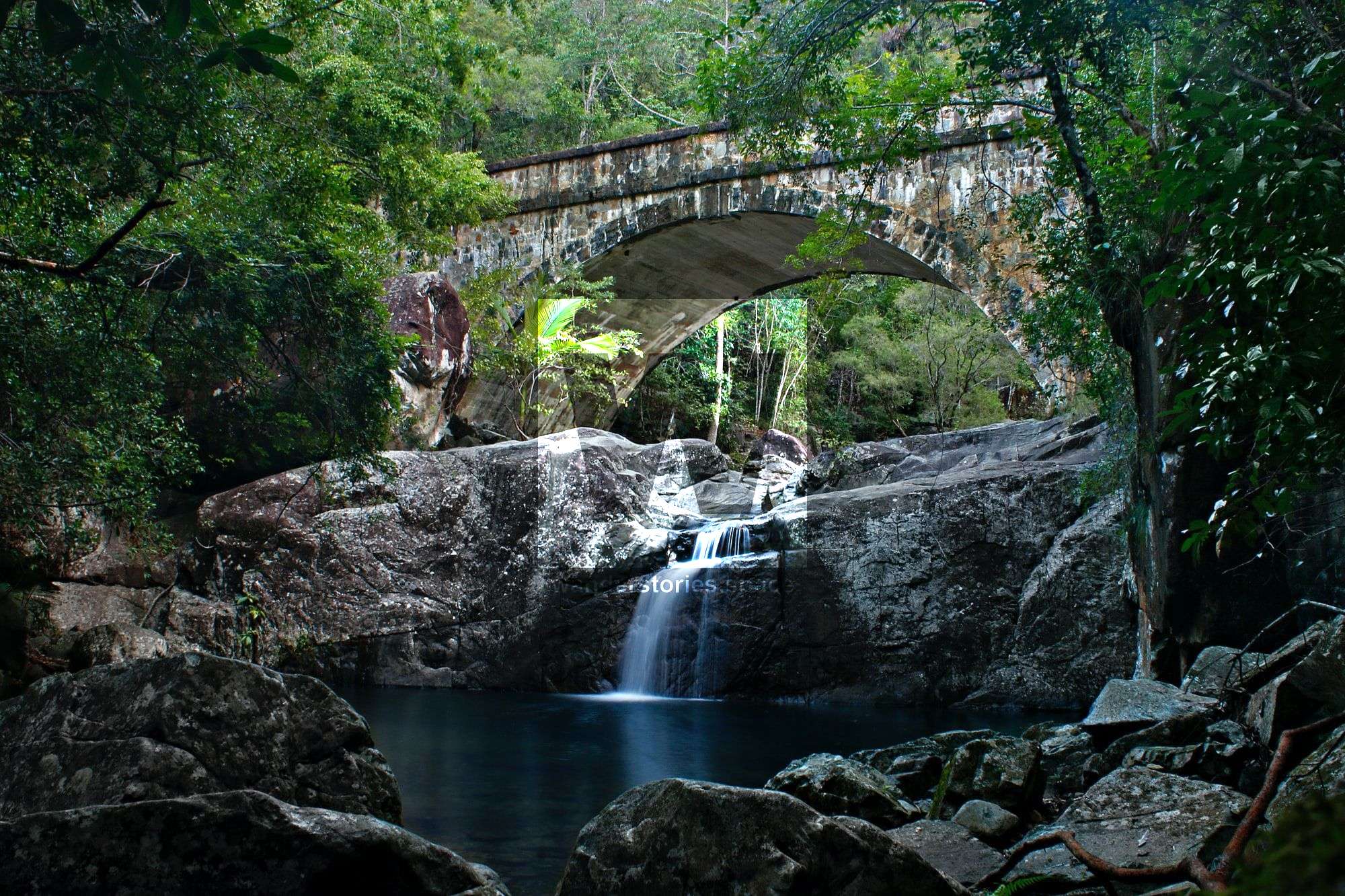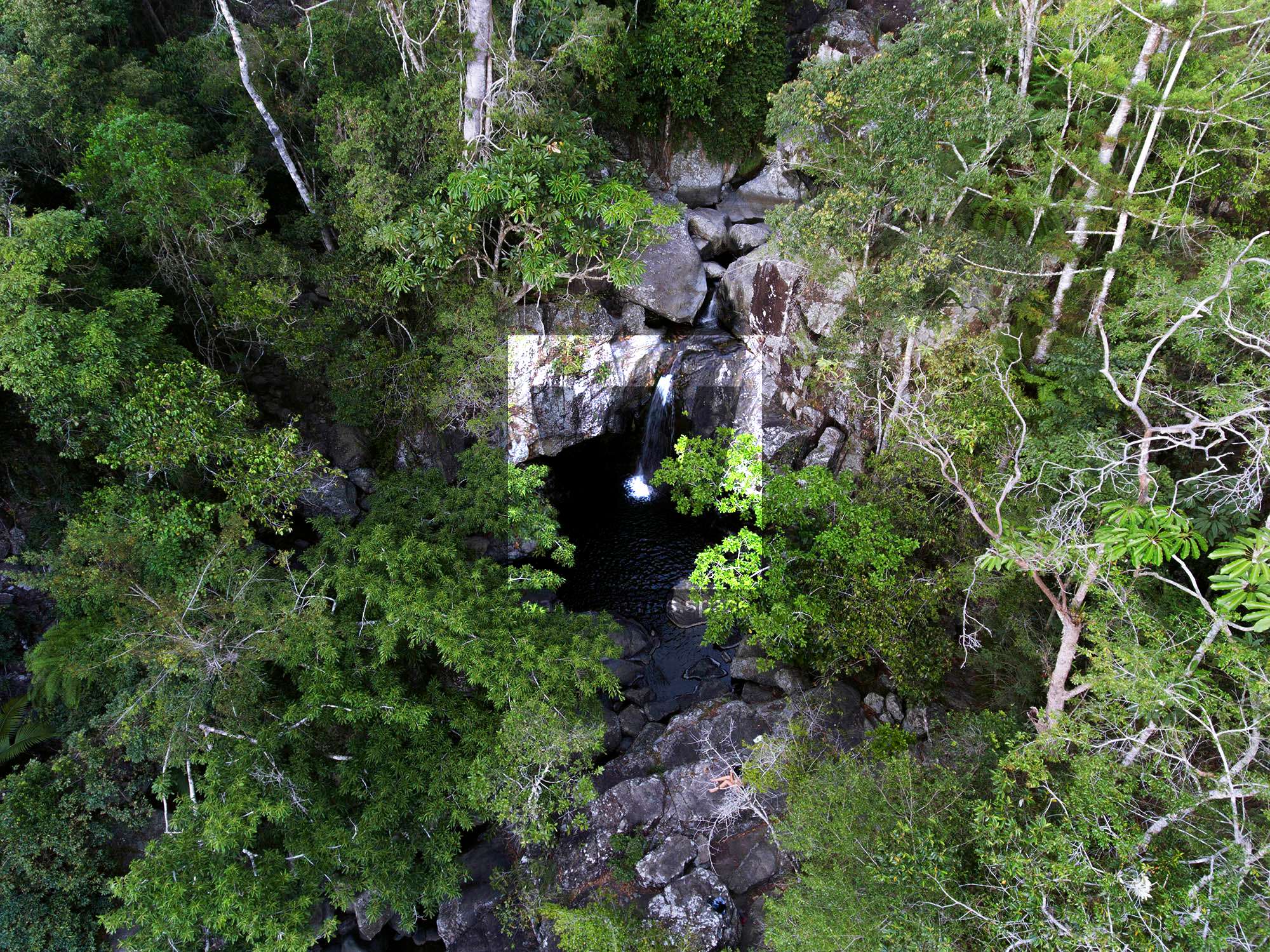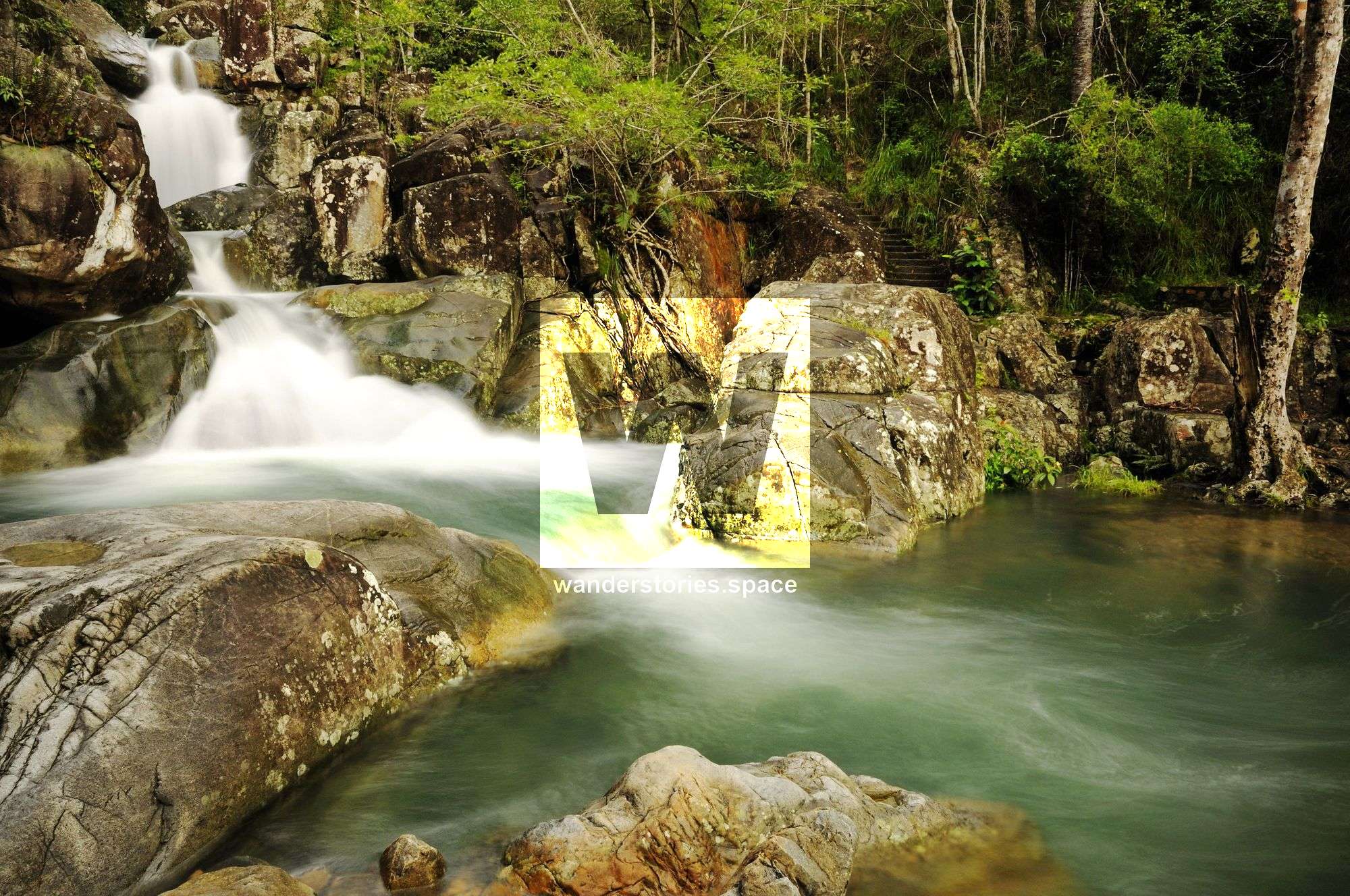Little Crystal Creek Bridge and Swimming Area
The pristine waterfalls, crystal clear waters, and ease of access of this freshwater creek are ideal for a refreshing swim. Little Crystal Creek is well-known for its historic stone arch bridge, the cascading waterfalls and one of the best freshwater swimming holes.

Location - Paluma Range National Park, North Queensland, Australia
Distance - 100 metres
Duration - 1 minute
Grade - 2, easy
Approach - 60 km, 1 hour north of Townsville
The pristine waterfalls, crystal clear waters, and ease of access to this freshwater creek are ideal for a refreshing swim. Little Crystal Creek is well-known for its historic stone arch bridge which was built in the 1930s, the cascading waterfalls and one of the best freshwater swimming holes. It's an ideal location to stop for a picnic barbecue lunch and swim.

Embrace the natural beauty of the Paluma Range National Park, the southern gateway to the Wet Tropics World Heritage Area. The mountain water cascades under a picturesque heritage-listed stone arch bridge. Its bridge is a popular place amongst the Townsville locals on the weekend; just watch out for those wet, slippery rocks covered in moss and lichen. Here you can escape the coastal lowland heat and relax in the cool mountain air of the Paluma Range.

Just above the bridge as some very spectacular waterfalls. It's also the most popular place in Little Crystal Creek and for good reasons. A perfect place to escape the summer heat by having a quick dip in refreshingly cool water. The rain forest has a good canopy so the vegetation isn't too dense. Scramble up the creek a little more to find a few, more secluded, waterfalls.
This is the most southerly national park in the Wet Tropics World Heritage Area. Tropical rainforest grows on the cooler mountain tops and in the valleys, while open eucalypt woodland covers the foothills. Casuarinas and paperbarks fringe the creeks in the lower, drier parts of the park. Bloodwoods, ironbarks, poplar gums and cocky apple trees grow here.

The upper Paluma Range and Mount Spec areas receive an average annual rainfall of almost 3m. Much of this rain comes from moisture-laden air from the sea cooling as it rises over the range. Mists are common and, in summer, the area is often cloaked in low cloud.
The present road to Paluma, Mt Spec Road, was largely completed by 1935. Construction was undertaken as a Depression unemployment relief project. Most work was done by men with picks and shovels, mostly labour intensive, with up to 180 men employed at a time. The masonry arch bridge over Little Crystal Creek was built at this time, with stone quarried from Barrett's Bluff, not far past Crystal Creek. A series of guesthouses and camping grounds were established along the length of the road during its construction. As construction teams moved slowly up the mountain building the road, they built ten tent camps. One team would work up the mountain from their camp while the other would work down to meet them from a higher camp. They would then abandon camp and move on and up... McClelland's Lookout (The Loop) was named after the Main Roads Officer-in-Charge of the construction of the Paluma Road.
The park is home to many animals found only in the Wet Tropics. Rainforest birds can be seen as well as those that inhabit drier, eucalypt woodland and watercourses. Several of the rainforest birds, notably chowchillas, mountain thornbills and golden bowerbirds, are found only in the Wet Tropics.
Wheelchair-accessible Facilities
- BBQ, picnic table, and shelter facilities
- Toilets
- Car park
- Camping is available at Big Crystal Creek.
What to bring
- A first aid kit
- Adequate drinking water
- A hat, sunscreen and sunglasses
- Cans or plastic bottles - glass containers are prohibited
- Rubbish bags
- Insect repellent


Tips
- Never jump or dive into Little Crystal Creek. Serious injuries and deaths have occurred here.
- Rocks can be extremely slippery and submerged timber can appear after flooding.
- Never walk on the rocks directly above the falls as they are extremely slippery and serious injuries could result from a fall.
- Seasonal closures are common in the wetter months, due to flooding and occasionally in the dryer months, the park will be closed due to fires.
- Do not attempt to cross strong flowing creeks and streams. Flooding can occur during and after heavy or prolonged periods of rain and the creek may become impassable.
- Wear insect repellent, clothing and shoes to protect yourself from stings, scratches and bites.
- Always carry adequate drinking water as well as equipment for treating water.
Leave No Trace and Protecting The Park
As this area is very popular, we will need to be more diligent in practising our Hike It Out and Leave No Trace philosophy. Please take everything back home with you. If you find rubbish, please pick it up and hike it out. Let's take only photos (and other people's rubbish) and leave only footprints (plus a cleaner environment).
- Do not feed native wildlife. It is a health risk to them and a safety risk to you.
- Glass containers are not permitted in some areas as broken glass can cause injuries.
- Never leave food, dirty dishes or bars of soap unattended as they may attract Australian brush-turkeys and native giant white-tailed rats.
- Take all rubbish with you, including food scraps.
- Take care not to pollute freshwater. Do not use soap, shampoo, or detergents in or near creeks
- Leave your pets at home. Domestic animals are not permitted in national parks.
This article, and all other articles, are for entertainment purposes only and are not to be used as a guide. Please see our Disclaimer for more information.
